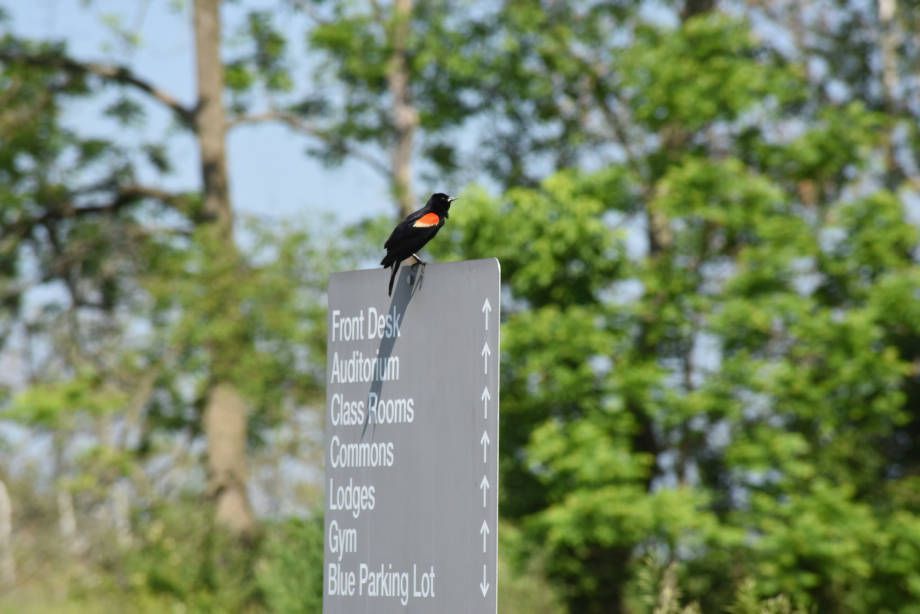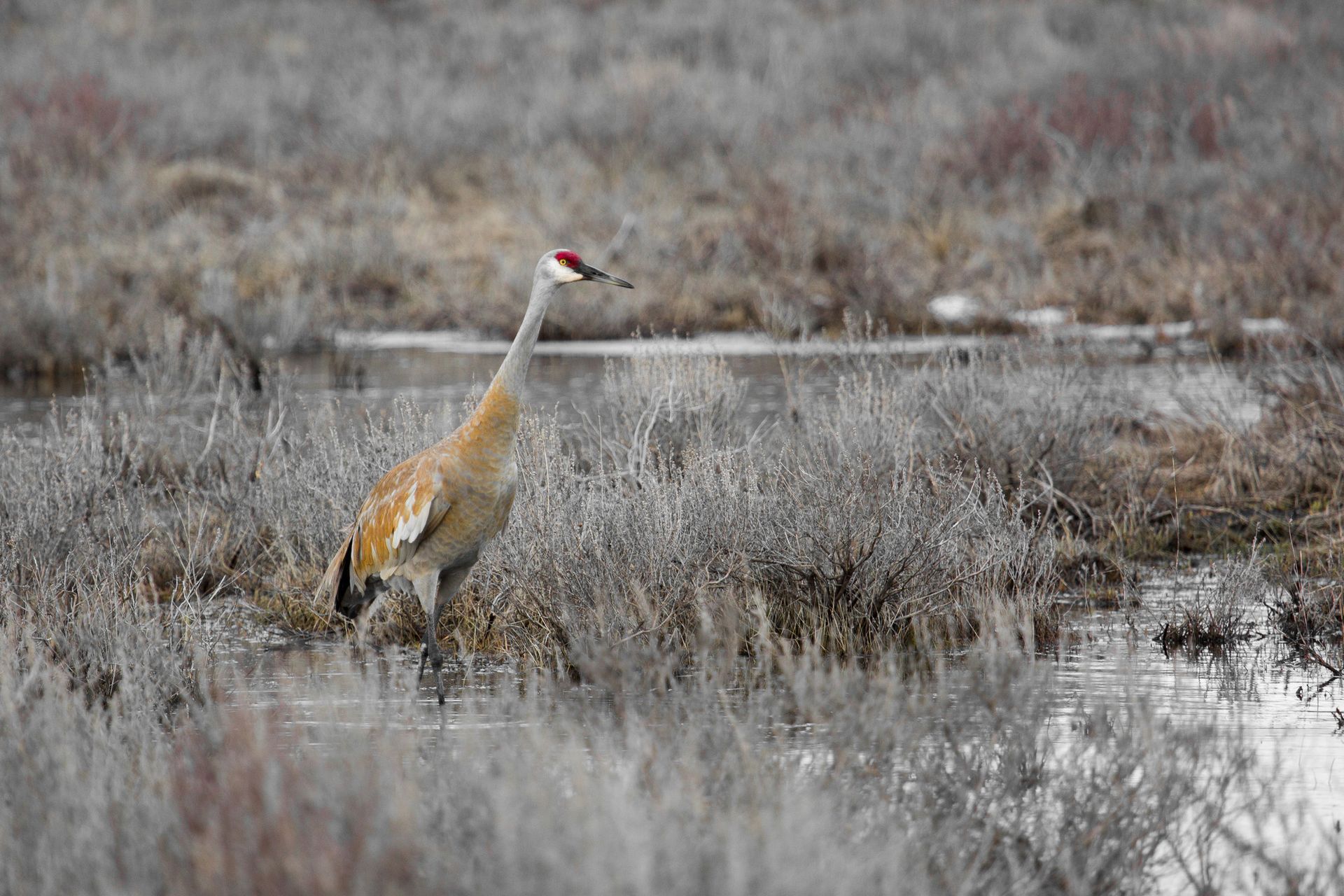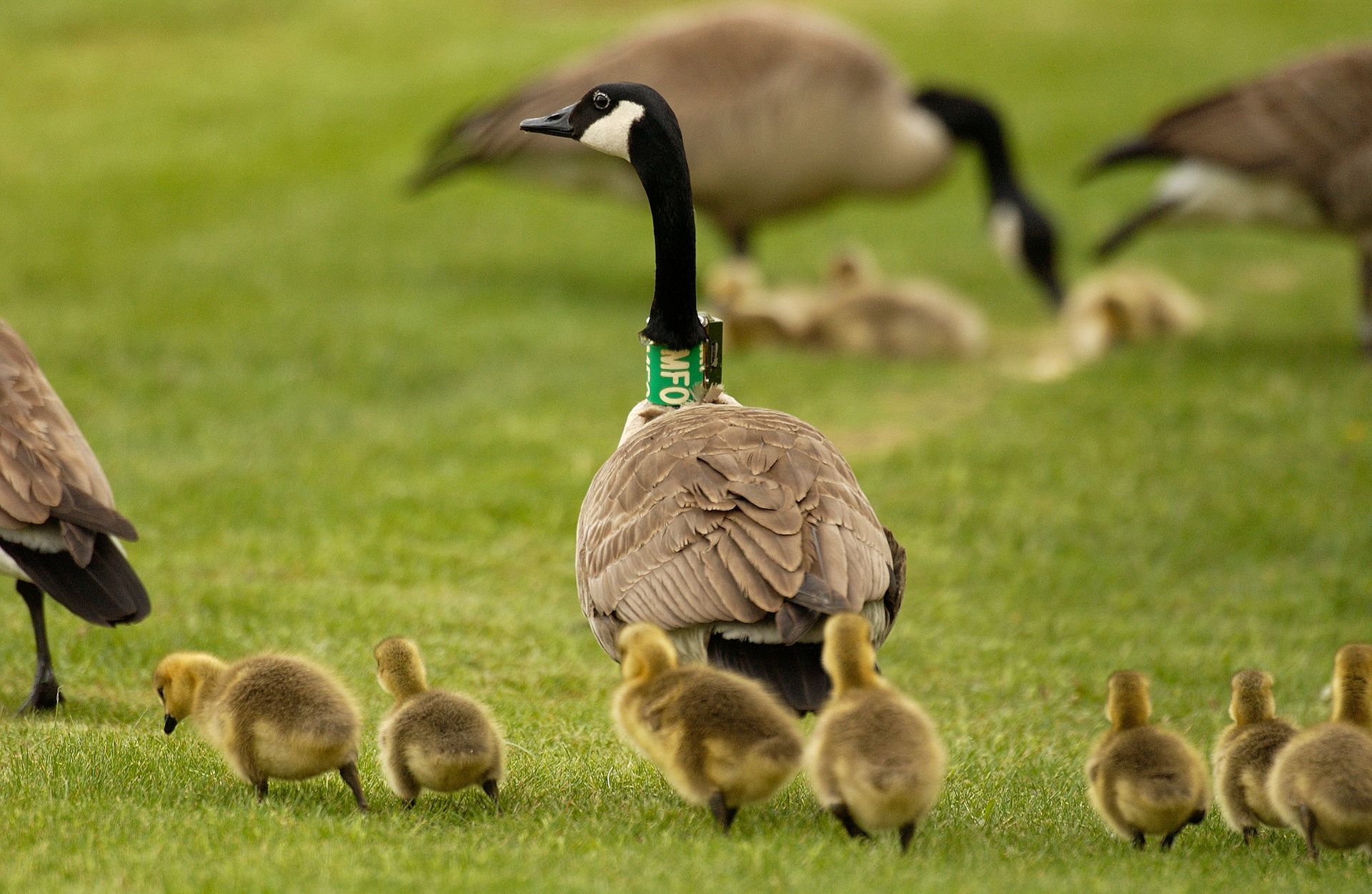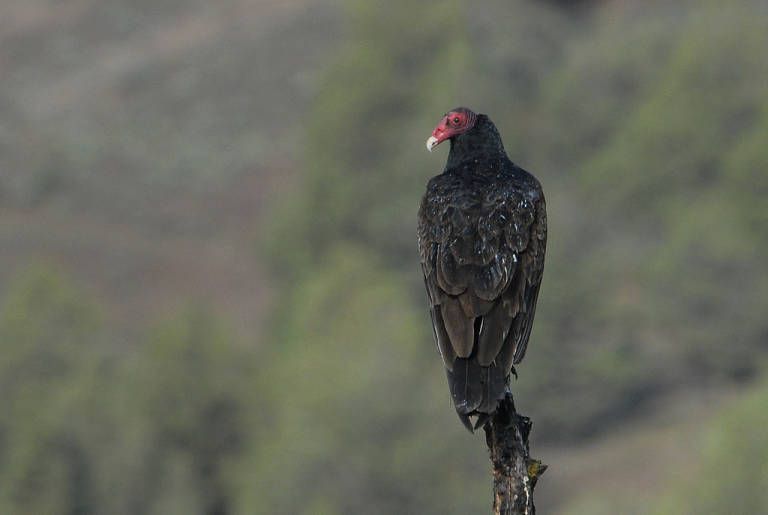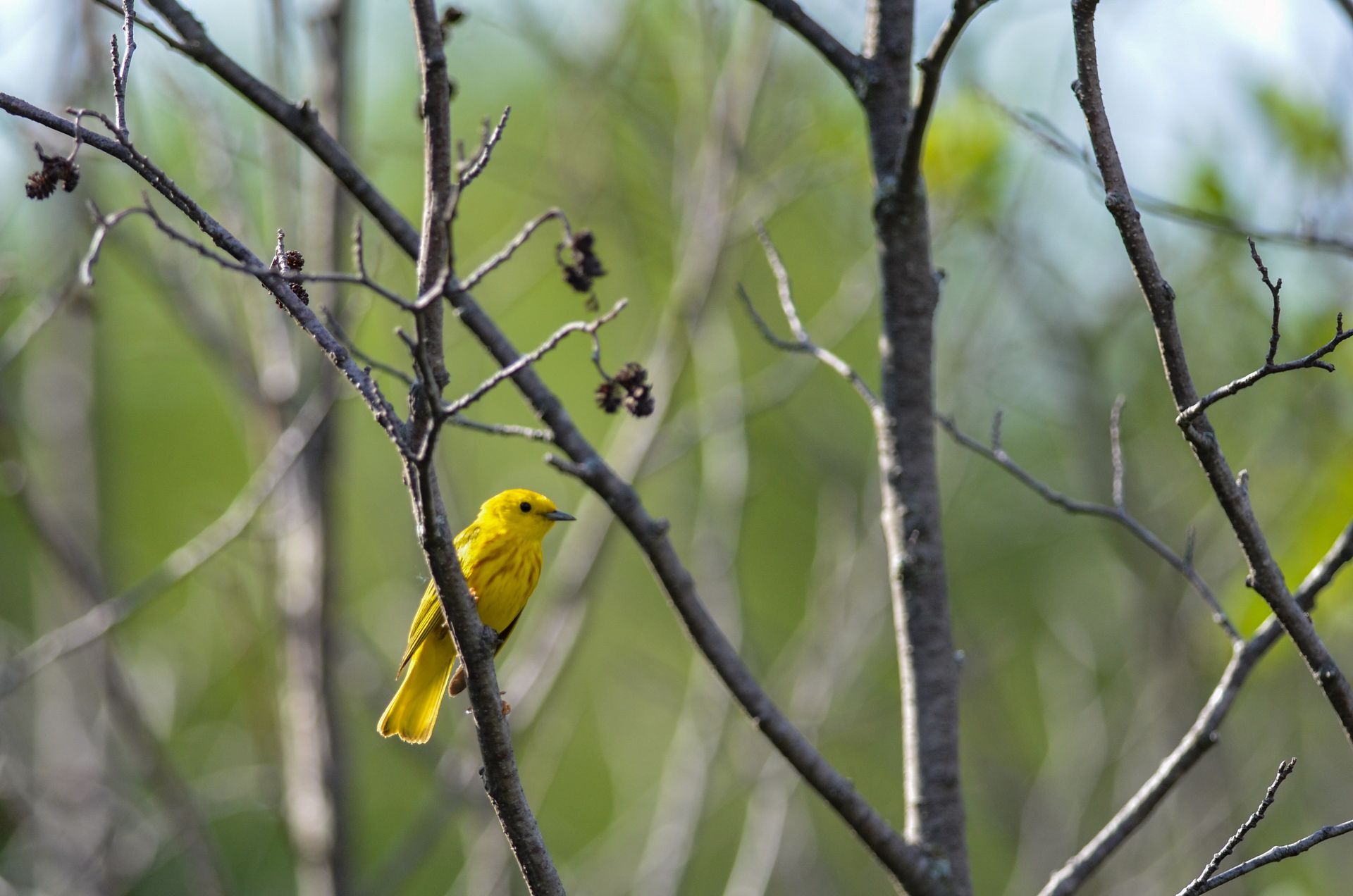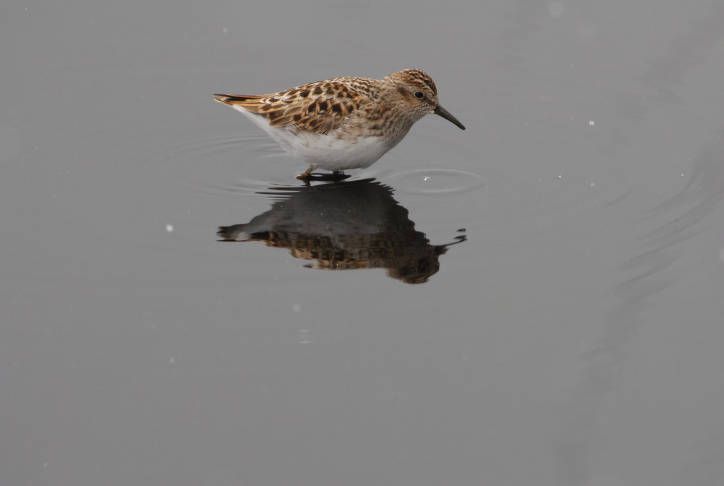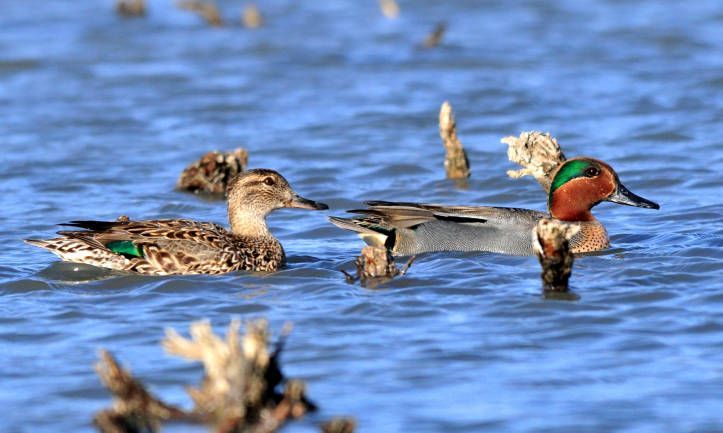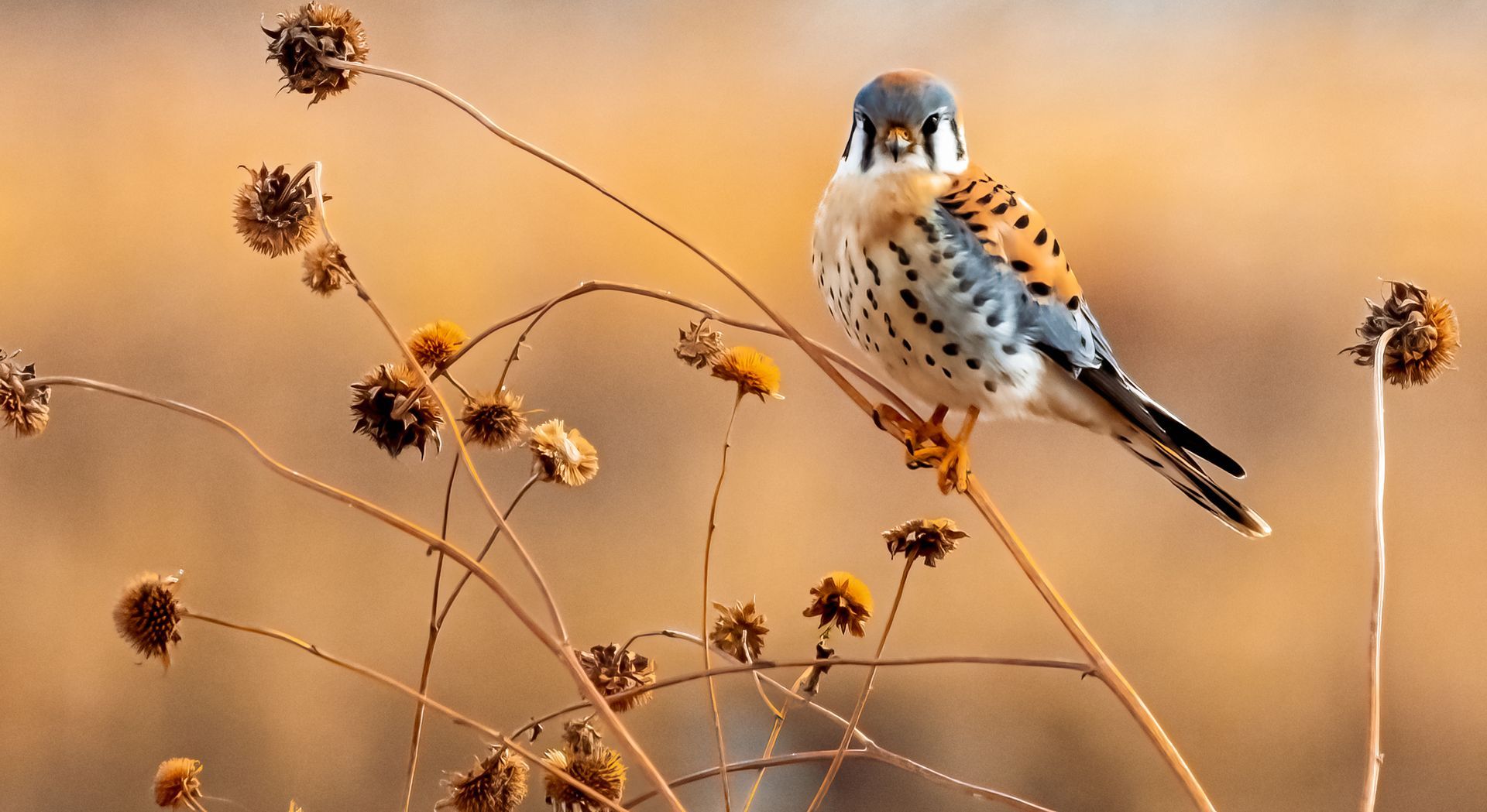Red-winged blackbirds appear very early in spring with males arriving before females. The males are solid black with bright red shoulder patches outlined in yellow. Females are a streaky brown color, with juveniles also exhibiting a similar coloring. Females also have a yellowish wash around their bill. This species occupies marshy areas and breeds in freshwater marshes, woody swamps, weedy fields, and hayfields. They also occasionally nest in wooded areas along waterways. Red-winged blackbirds feed mainly on insects in the summer and seeds in the winter (Cornell University Lab of Ornithology, National Audubon Society).
Their breeding season begins in early spring and males will sing their heart out to try and attract a female. Look for these birds sitting on a high perch in marshy areas and listen for their “oak-a-lee" song (University of Michigan Museum of Zoology).

